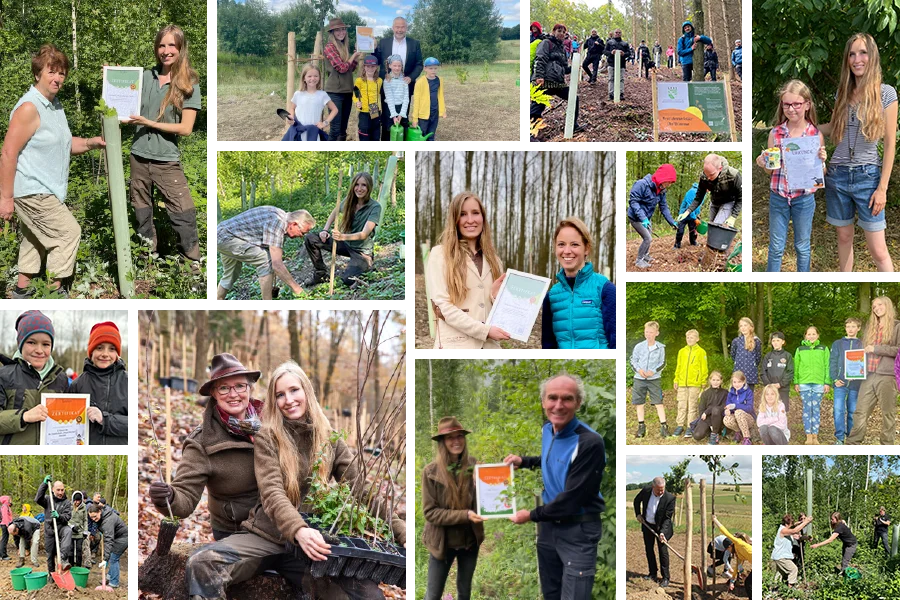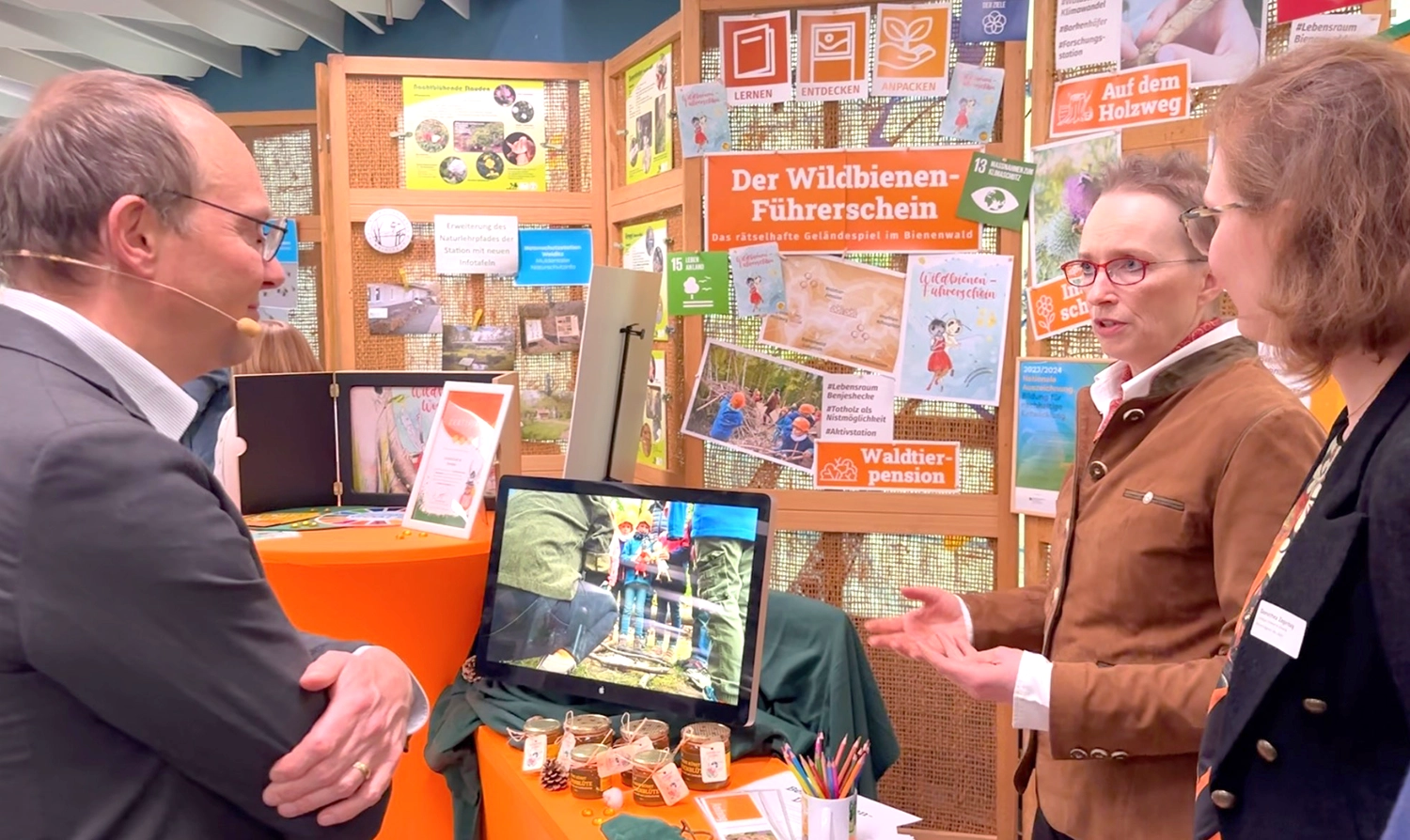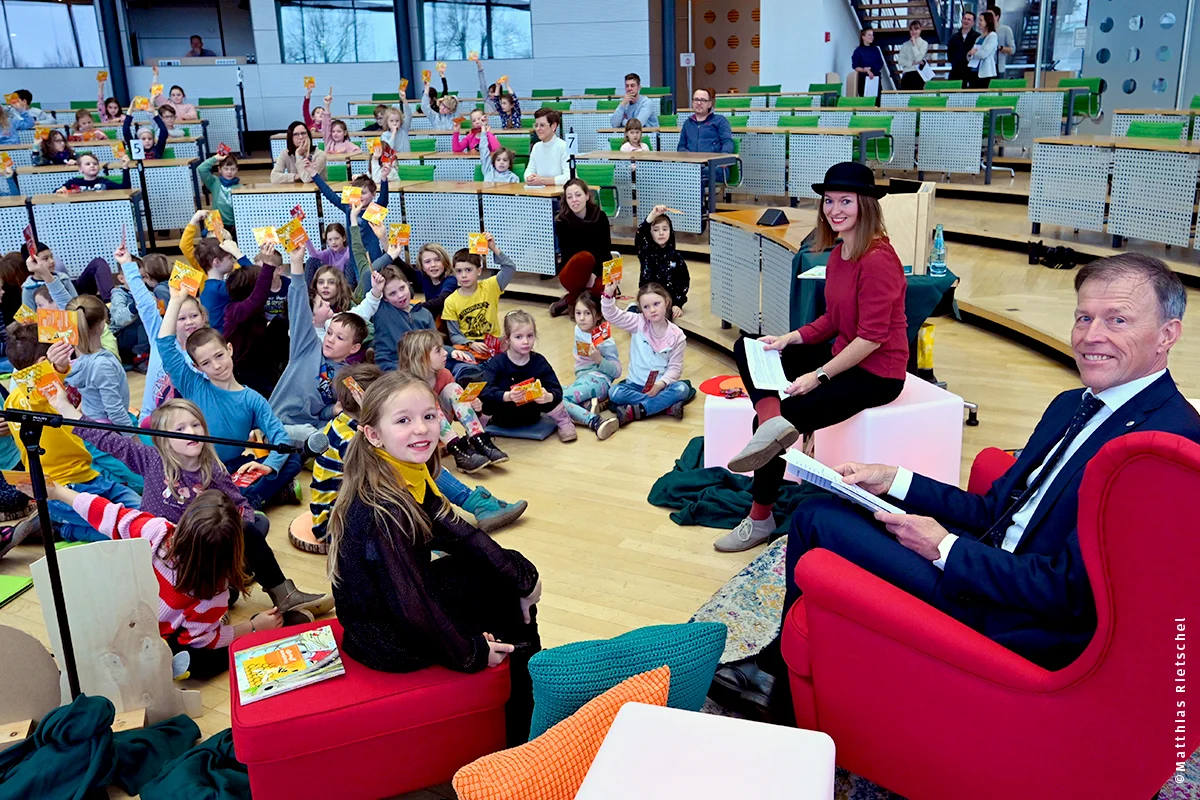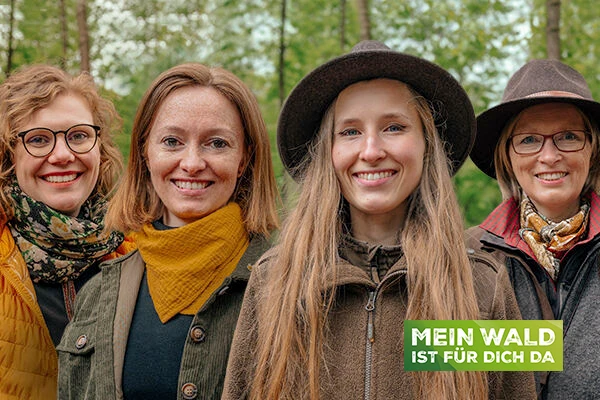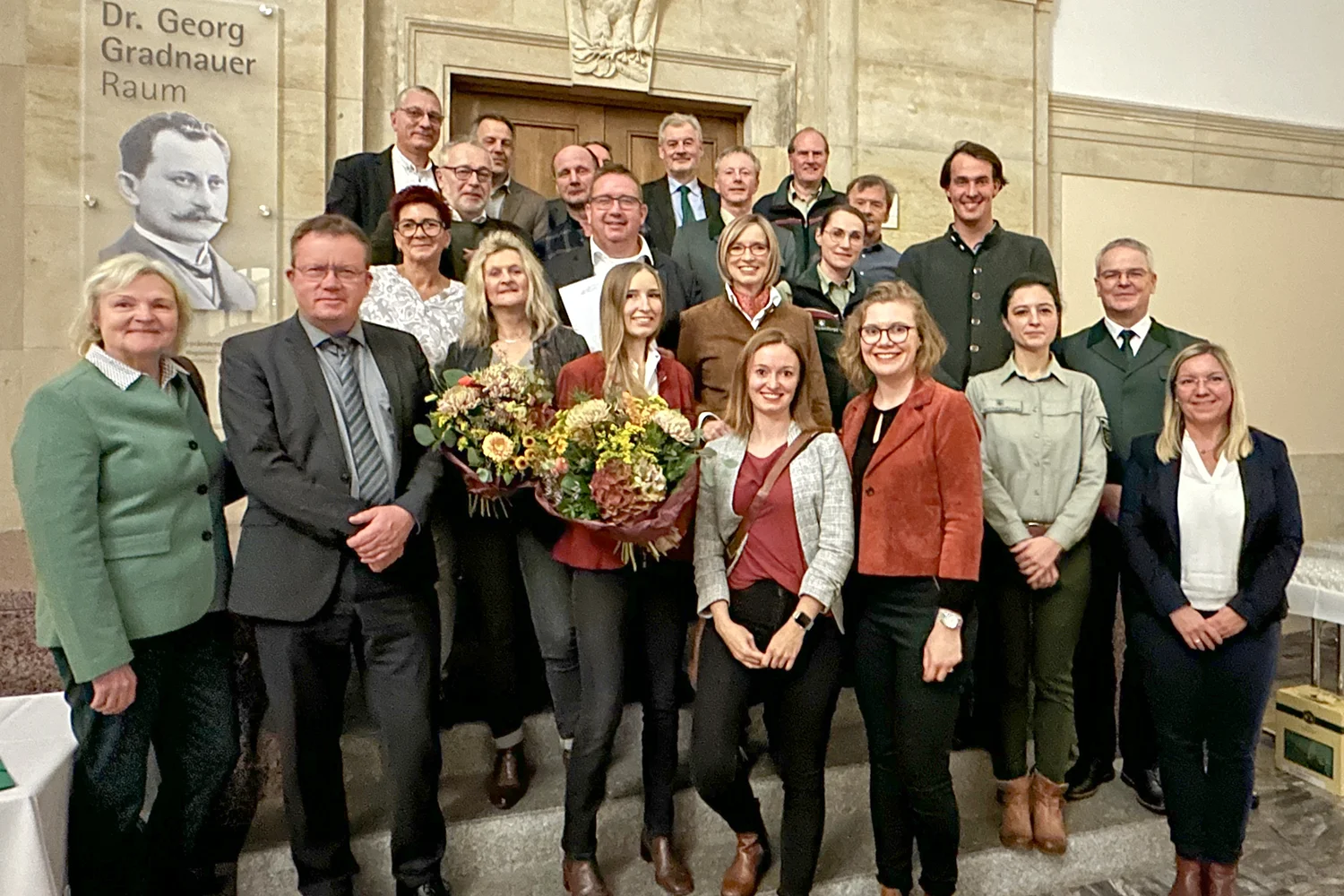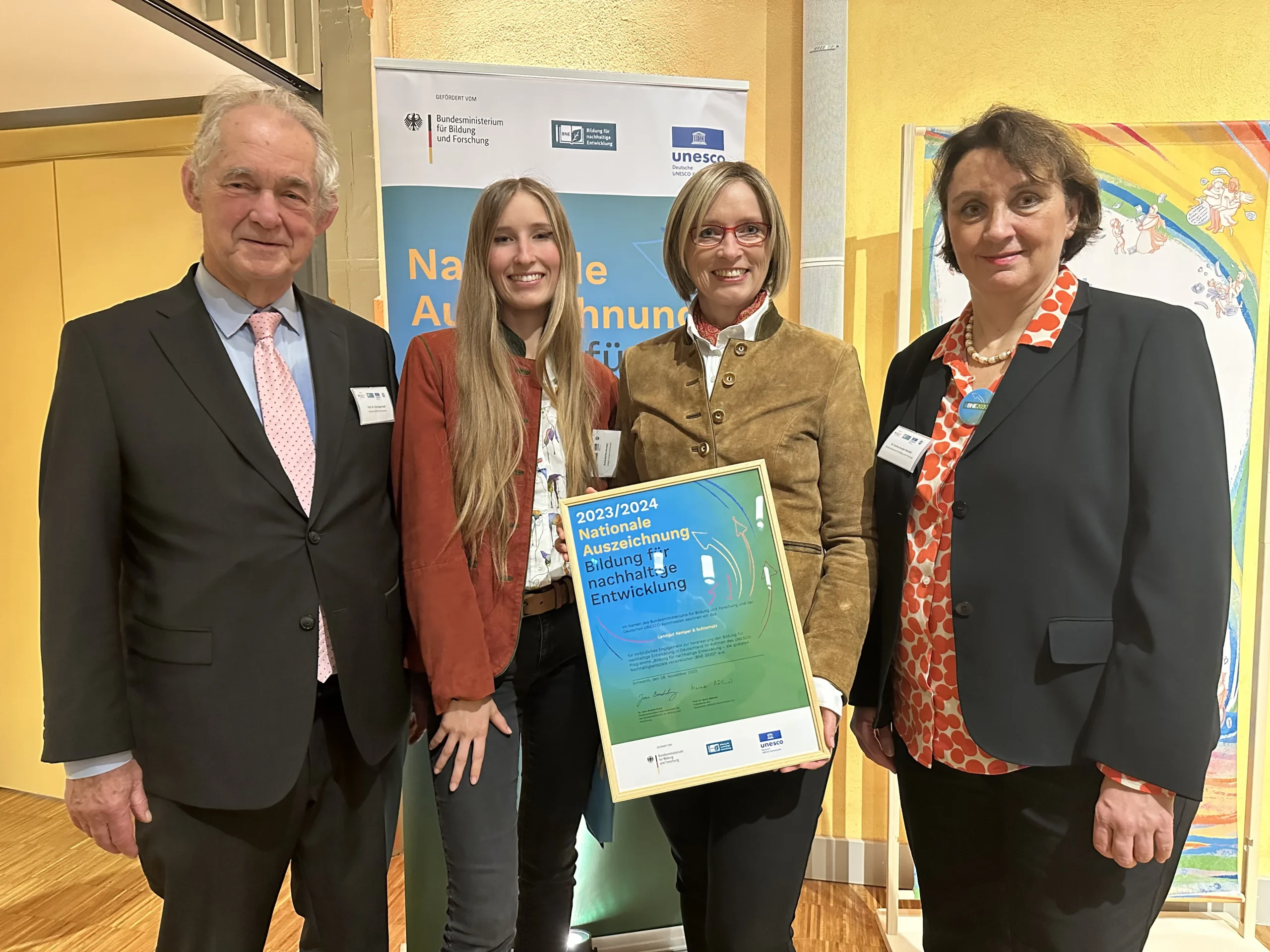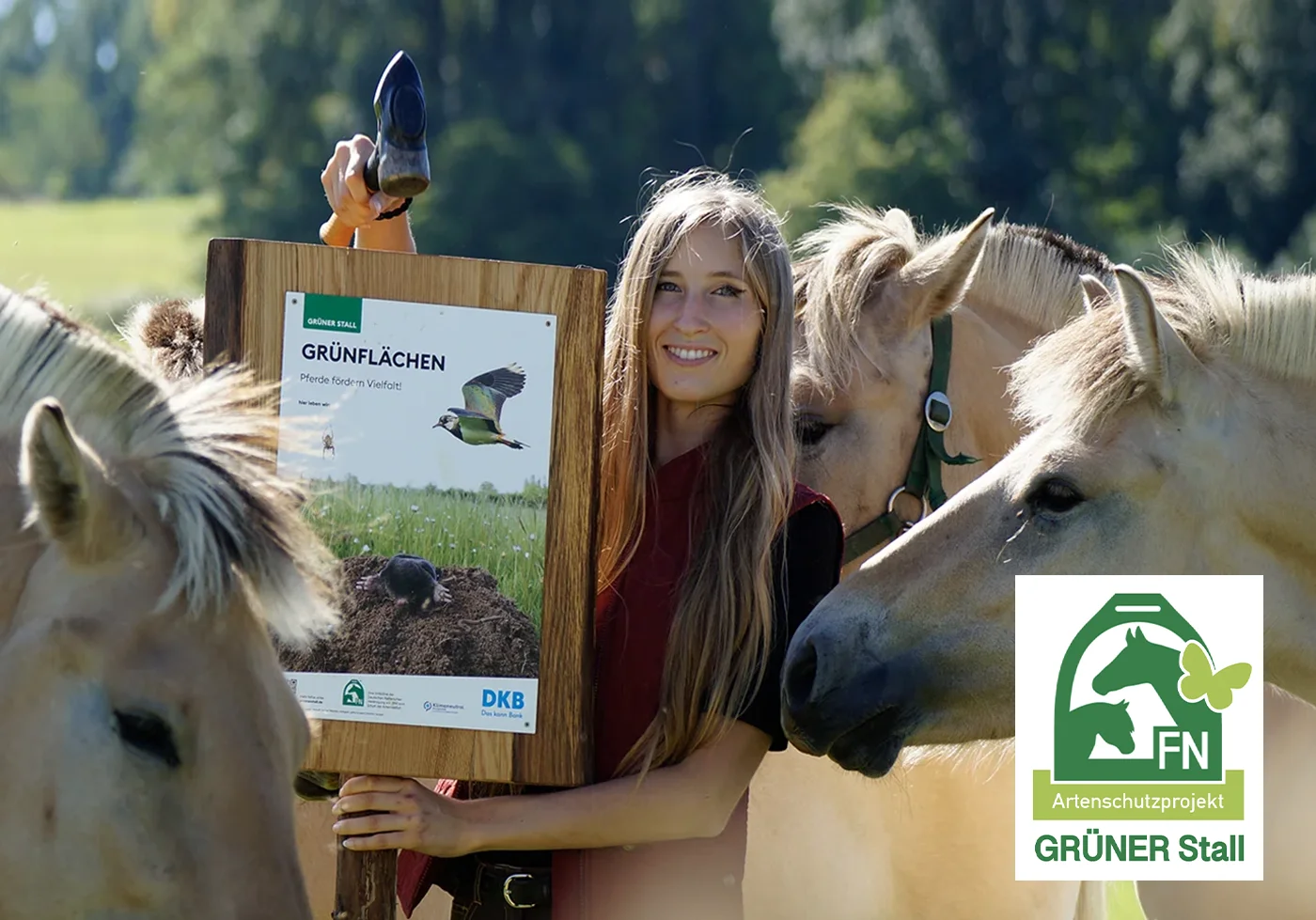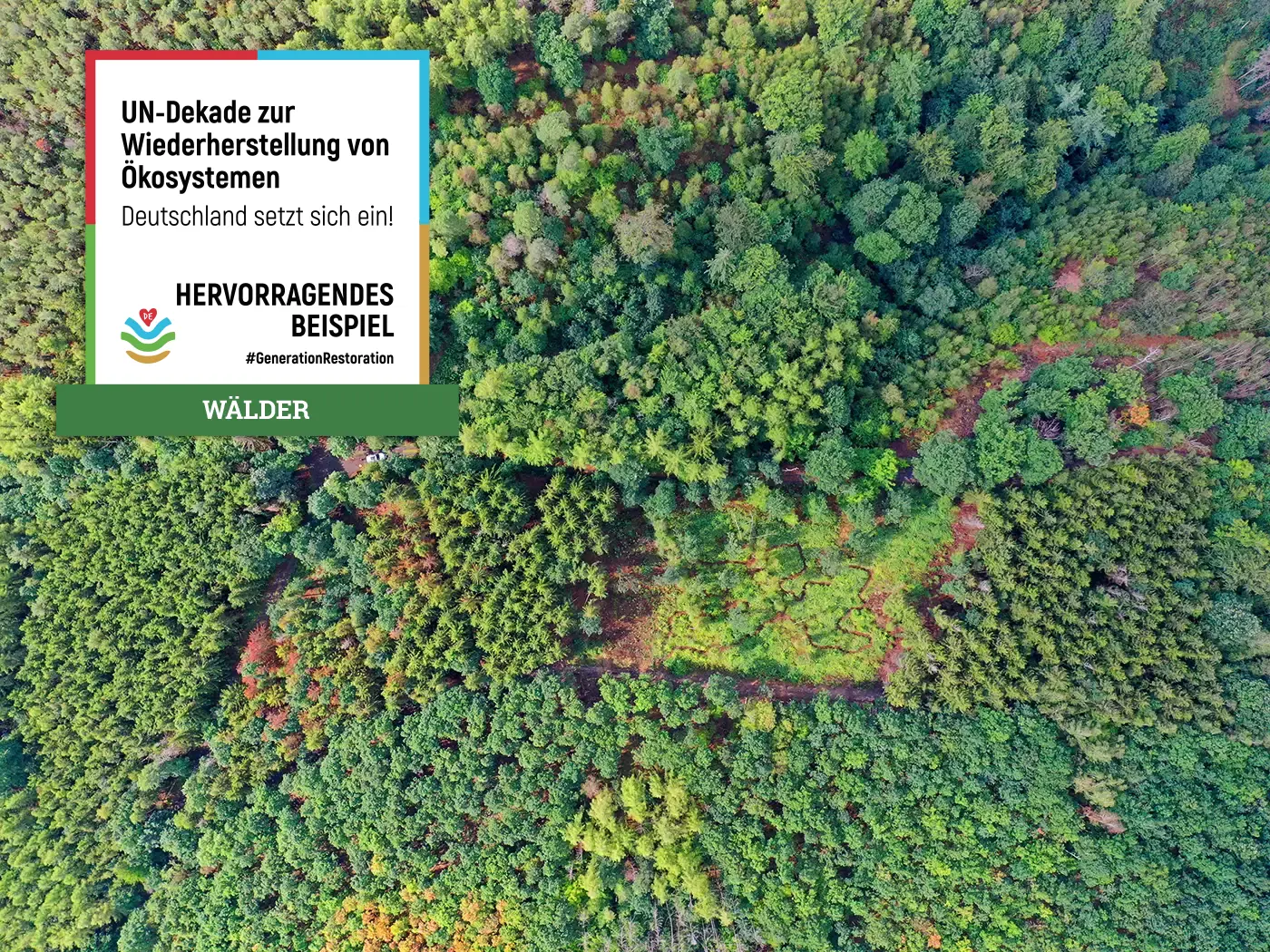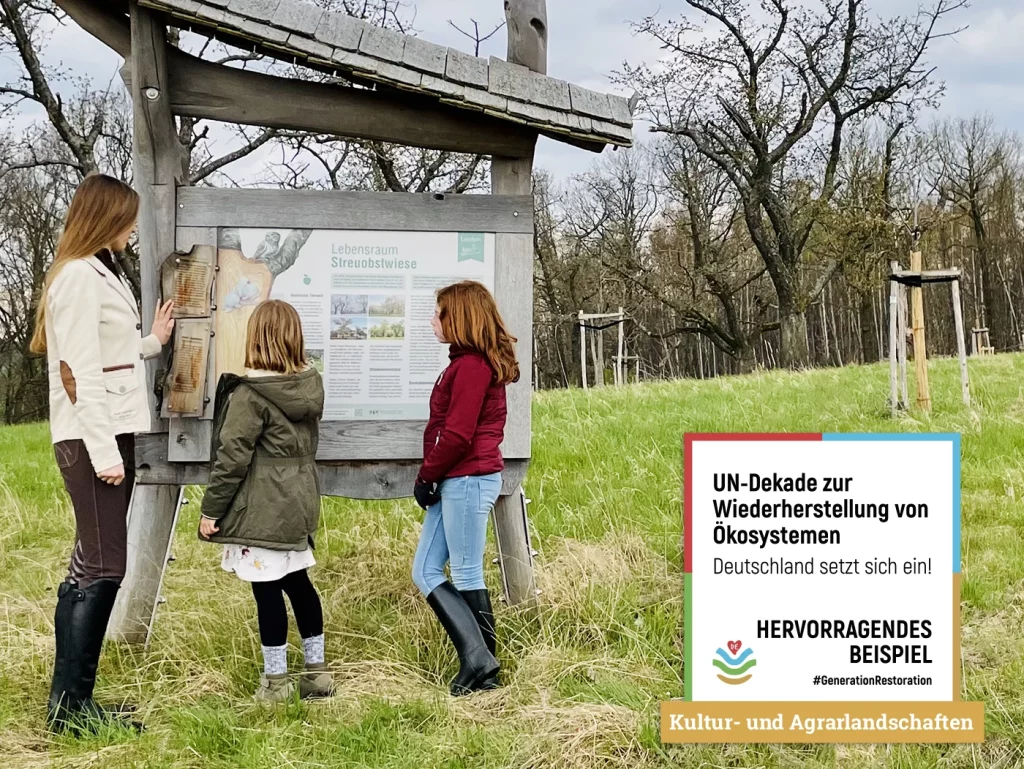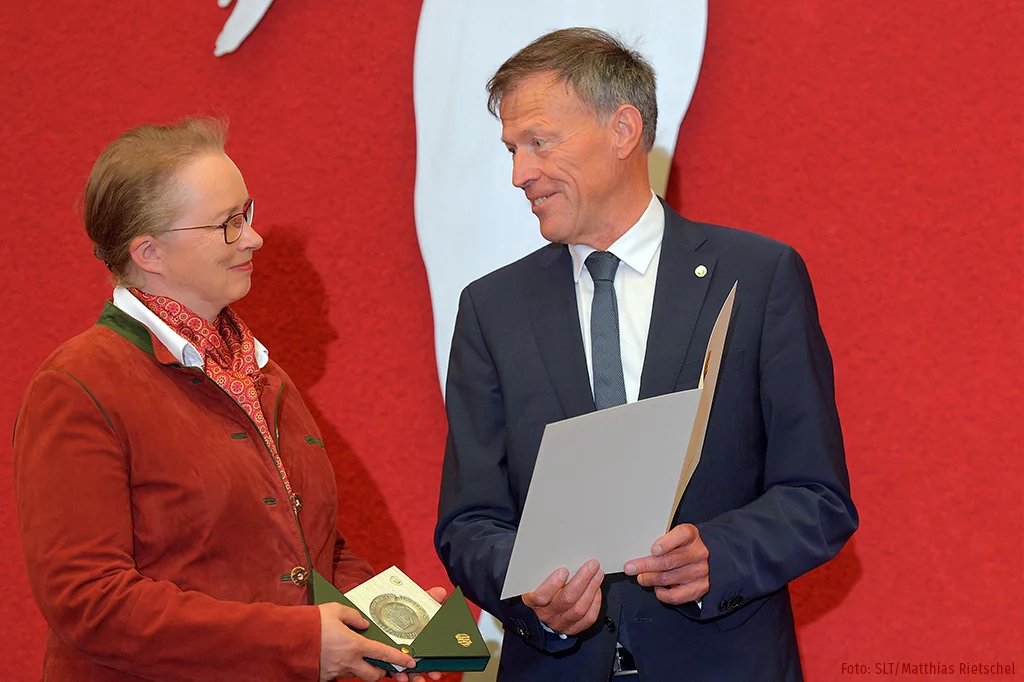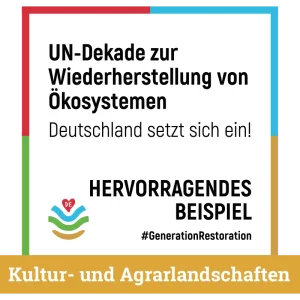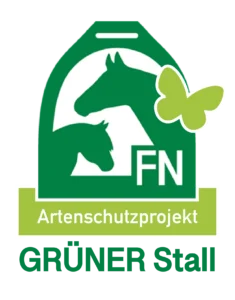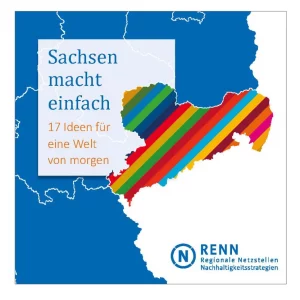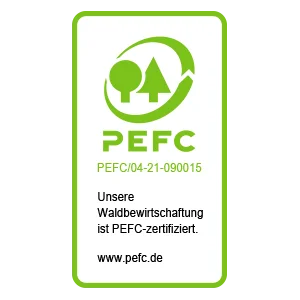Willkommen am
Landgut Kemper & Schlomski
BNE und Biodiversität – unsere Zukunft, unsere Verantwortung!
Am Rande der Sächsischen Schweiz haben wir mit dem Landgut Kemper & Schlomski (LGKS) einen vielseitigen Ort zum Forschen, Lernen und Mitgestalten geschaffen. Auf strukturreichen, ökologisch wertvollen Offenlandflächen mit Streuobstwiesen, Feuchtbiotopen und artenreichen Heuwiesen, sowie naturnah bewirtschafteten Waldflächen, entwickeln wir mit viel Herzblut zukunftsweisende Naturschutzprojekte zur Wiederherstellung stabiler Ökosysteme. Diese Projekte sind enorm wichtig und eine großartige Möglichkeit, sich aktiv für Natur- und Klimaschutz und Biologische Vielfalt zu engagieren.
Gleichzeitig ist das Landgut Kemper & Schlomski ein vielfältiger Lernort für Bildung für nachhaltige Entwicklung (BNE), wo wir sowohl vor Ort als auch digital Bildungsangebote für Groß und Klein anbieten.
Werde Teil unseres Teams
Neues vom Landgut
„Naturvielfalt und Landleben“ – Hier erfährst Du spannende Neuigkeiten und interessantes Wissen rund um Naturschutz, BNE, unsere Pferde und die vielfältigen Angebote am LGKS. Im Veranstaltungskalender findest Du unsere Veranstaltungstipps, Mitmachangebote, Feste und Events. Wir freuen uns auf Dich!
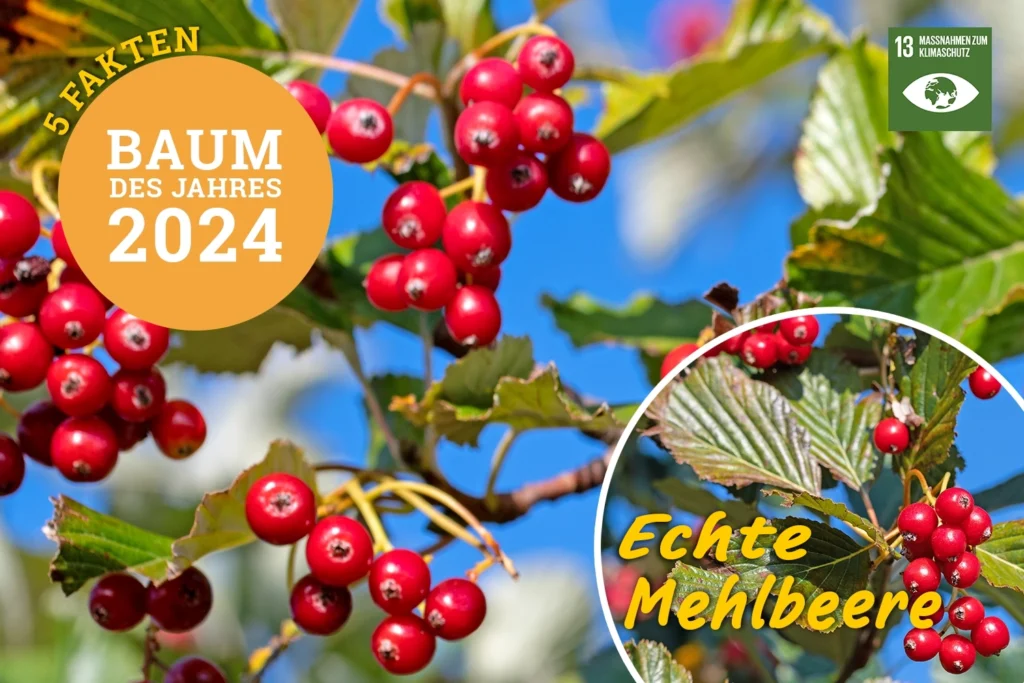
Tag des Baumes: Faktencheck Echte Mehlbeere – Baum des Jahres 2024
Heute am internationalen Tag des Baumes feiern wir die „Echte Mehlbeere”, den Baum des Jahres 2024. Wir möchten diesen Tag zum Anlass nehmen, einen Faktencheck über die spannende Mehlbeere durchzuführen. Denn aus waldökologischer Sicht ist sie ein wahrer Wunderbaum!

Ostsächsischer Töpfermarkt Dresden – Signierstunde mit Wildbiene Wonka
Am 01. und 02. Juni 2024 findet in Dresden der 11. Ostsächsische Töpfermarkt statt.
Die Besucher können sich auf Keramik aller Art freuen. Und was passt da besser als zum heutigen Welttag des Buches, bei einer Tasse Kakao aus einem schönen Töpferkrug mehr über den 1. Bienenwald und unserer Kinderbuchgeschichte der Wildbiene Wonka zu erfahren?
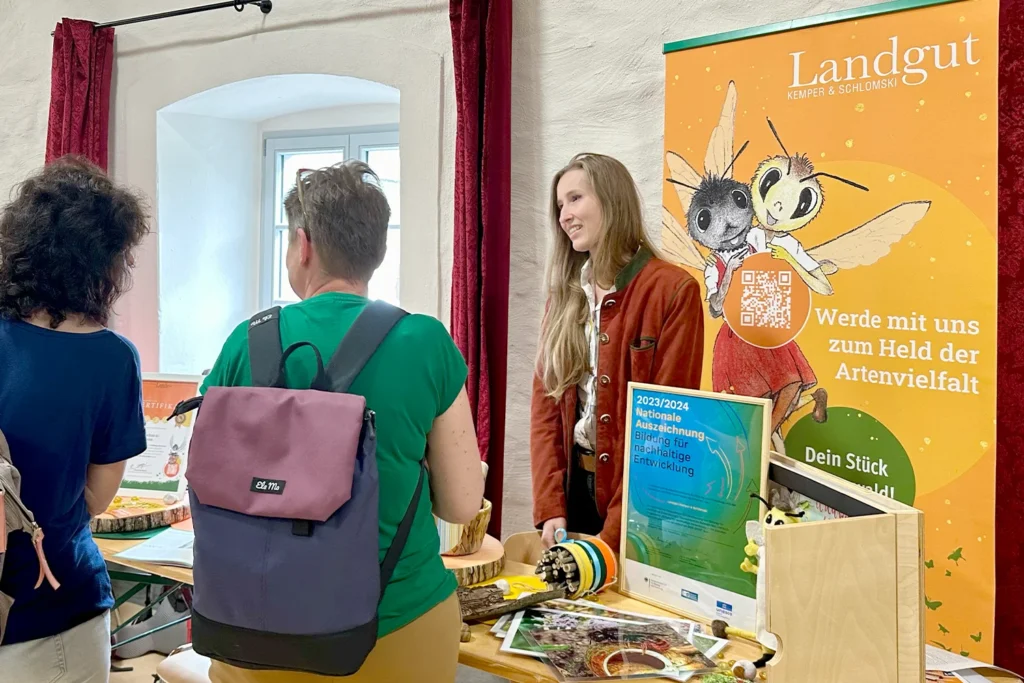
BNE-Bildungsmarkt auf Schloss Lauenstein
Beim BNE-Bildungsmarkt am 09.04.2024 stellten wir in den historischen Räumen von Schloss Lauenstein interessierten Lehrkräften, Schulleitern und Bildungsverantwortlichen unsere vielfältigen BNE-Angebote rund um den Bienenwald vor.
LGKS-Blog
Weitere Beiträge zu unseren vielfältigen Projekten, neuen Veranstaltungen und dem spannenden Hofleben findet Ihr in unserem Blog.
Newsletter
In unserem vierteljährlichen Newsletter „Hofgeflüster“ erhaltet Ihr regelmäßig Updates zu unseren Aktivitäten.
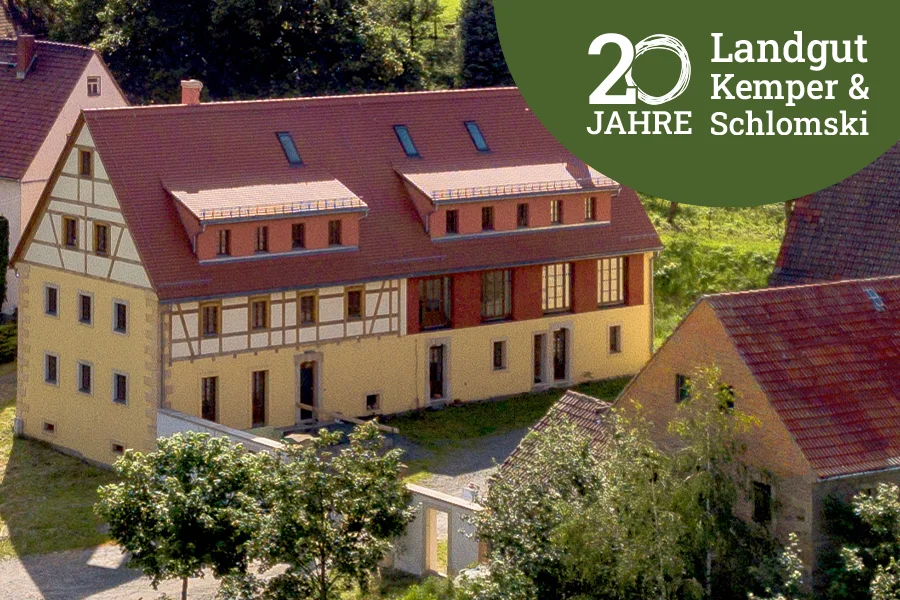
2o Jahre Landgut Kemper & Schlomski
Seit 20 Jahren arbeiten wir mit Herzblut daran, unsere Natur, unsere Umwelt, unsere Heimat zu schützen und zu bewahren. Aus einem baufälligem Bauernhof wurde das denkmalgeschützte Landgut. Aus mutigen Ideen wurden ausgezeichnete Projekte. Aus interessierten Besuchen von verschiedenen Unternehmen, Bildungseinrichtungen und Vereinen sind Dutzende von Kooperationen und Partnerschaften entstanden.
Wir sind stolz mit unseren Initiativen, Projekten und Modellvorhaben als Impulsgeber andere zu inspirieren und mit einem gemeinsamen Engagement unsere Natur für viele zukünftige Genrationen als wertvolles Gut zu erhalten.
Vielfältige Wirkungsbereiche – Eine Mission
Mit unseren Naturschutzprojekten im gesamten Biotopverbund leisten wir einen wertvollen Beitrag zum Erhalt der Ökosysteme. Wir vernetzen verschiedene Lebensräume und Strukturelemente als Trittsteine der Biodiversität. Unsere Arbeit verknüpft Naturschutz mit Bildung und schafft ausgezeichnete und einzigartige Angebote. Unsere Pferde spielen dabei eine besondere Rolle: Sie sind nicht nur Teil des Projekts, sondern auch Botschafter der Artenvielfalt. Ihre nachhaltige Beweidung fördert die biologische Vielfalt und schützt ökologisch wertvolle Flächen.
Naturschutzprojekte vor Ort und interaktiv
Werteorientiert und kreativ
Wir entwickeln Ökosysteme gemeinsam mit Euch! Bei all unseren Projekten zur Schaffung intakter Ökosysteme beziehen wir die Bevölkerung mit ein und regen durch unsere intensive Öffentlichkeitsarbeit zur Nachahmung an.
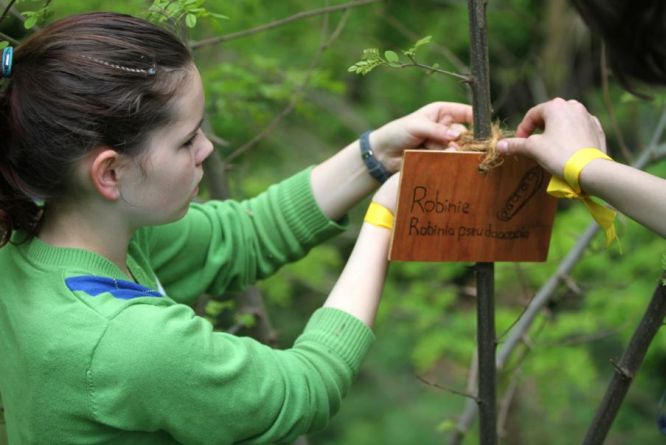

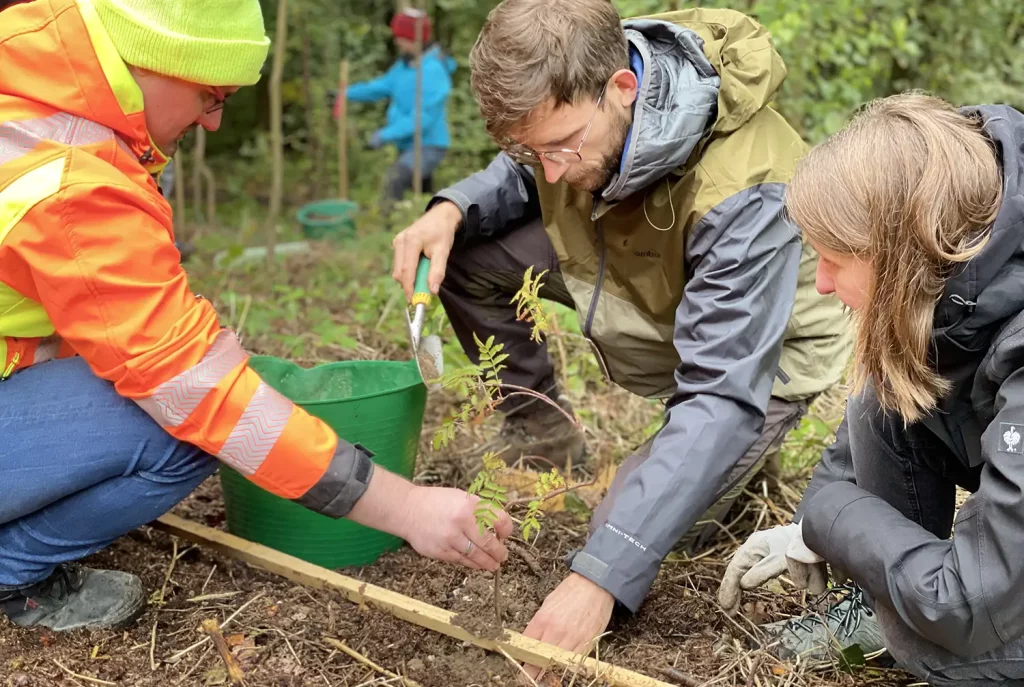

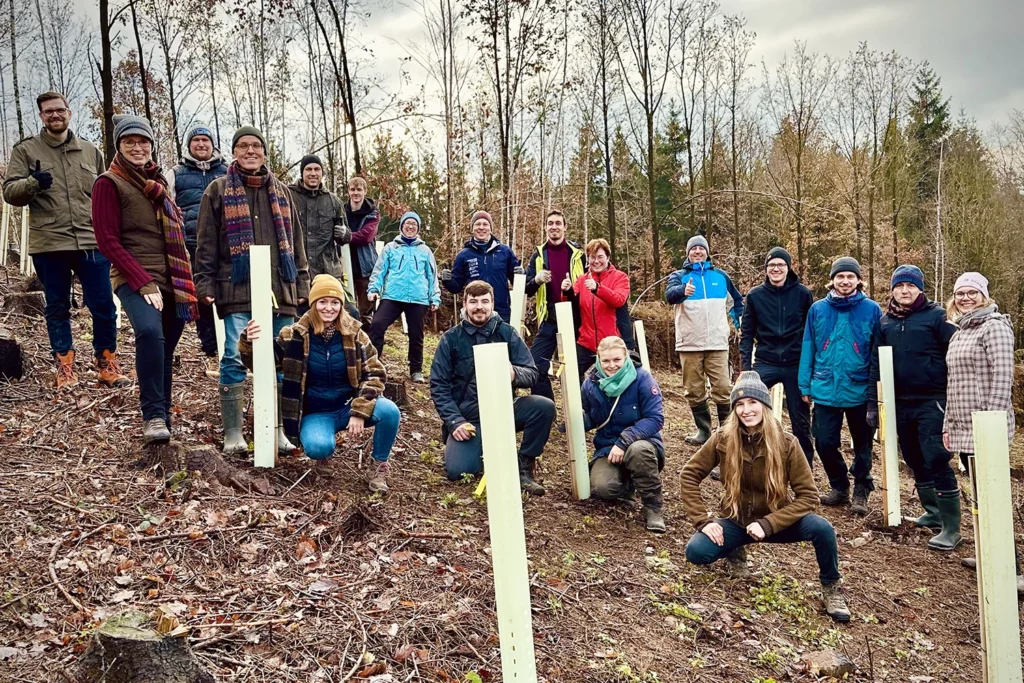
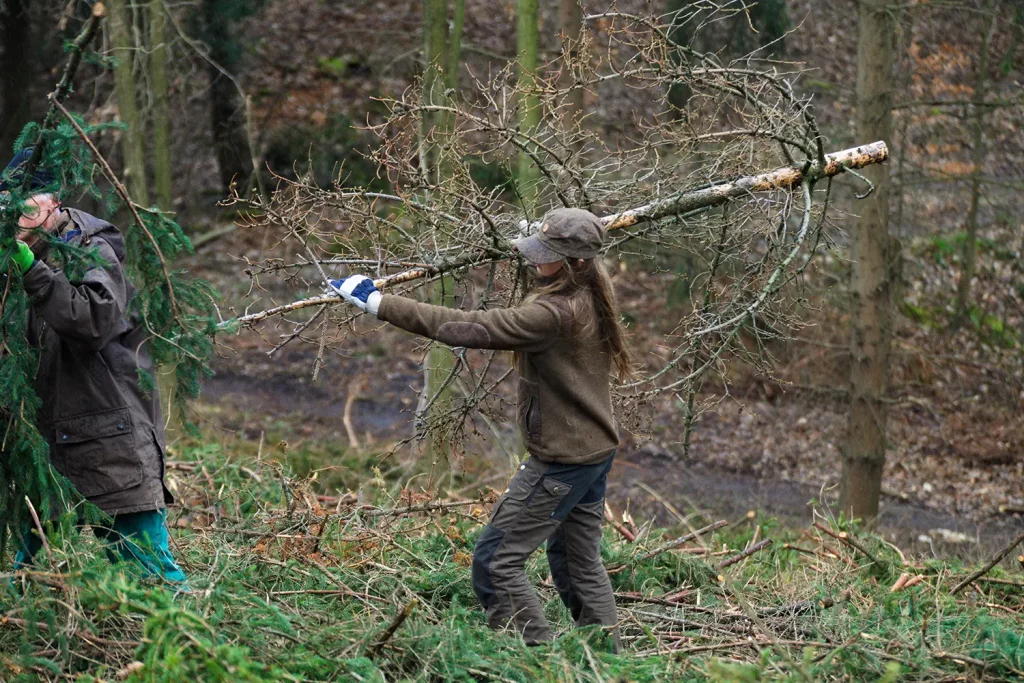
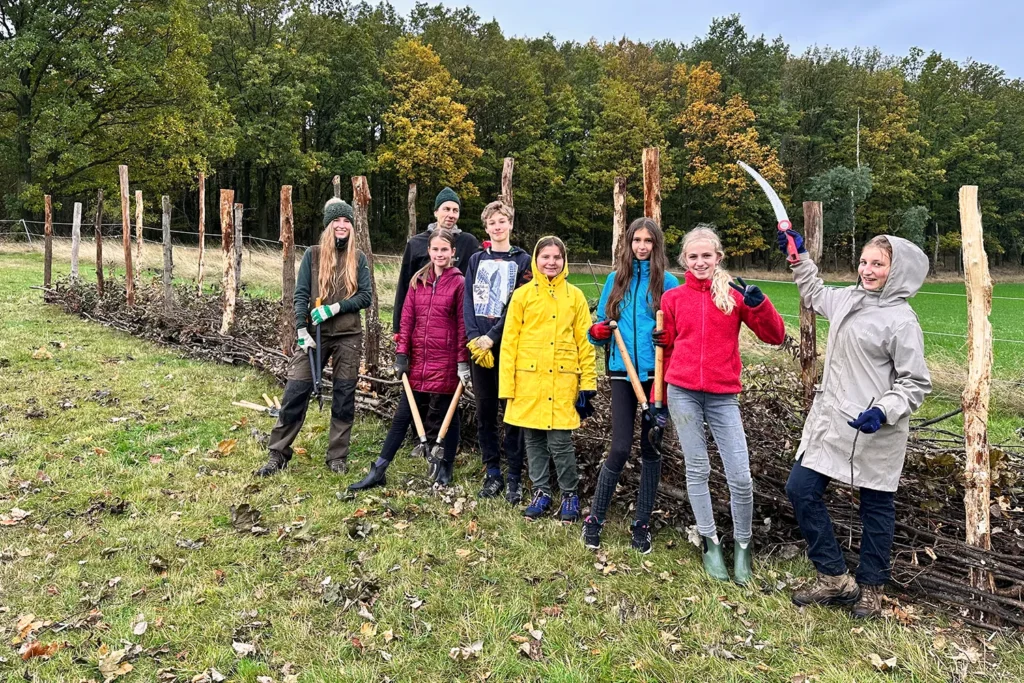
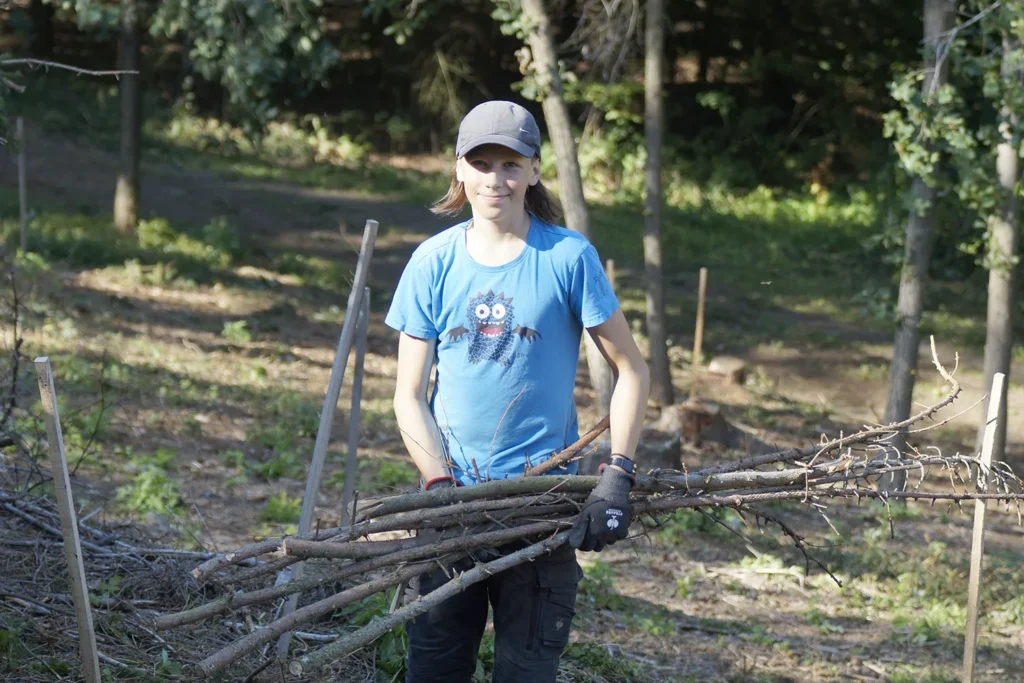
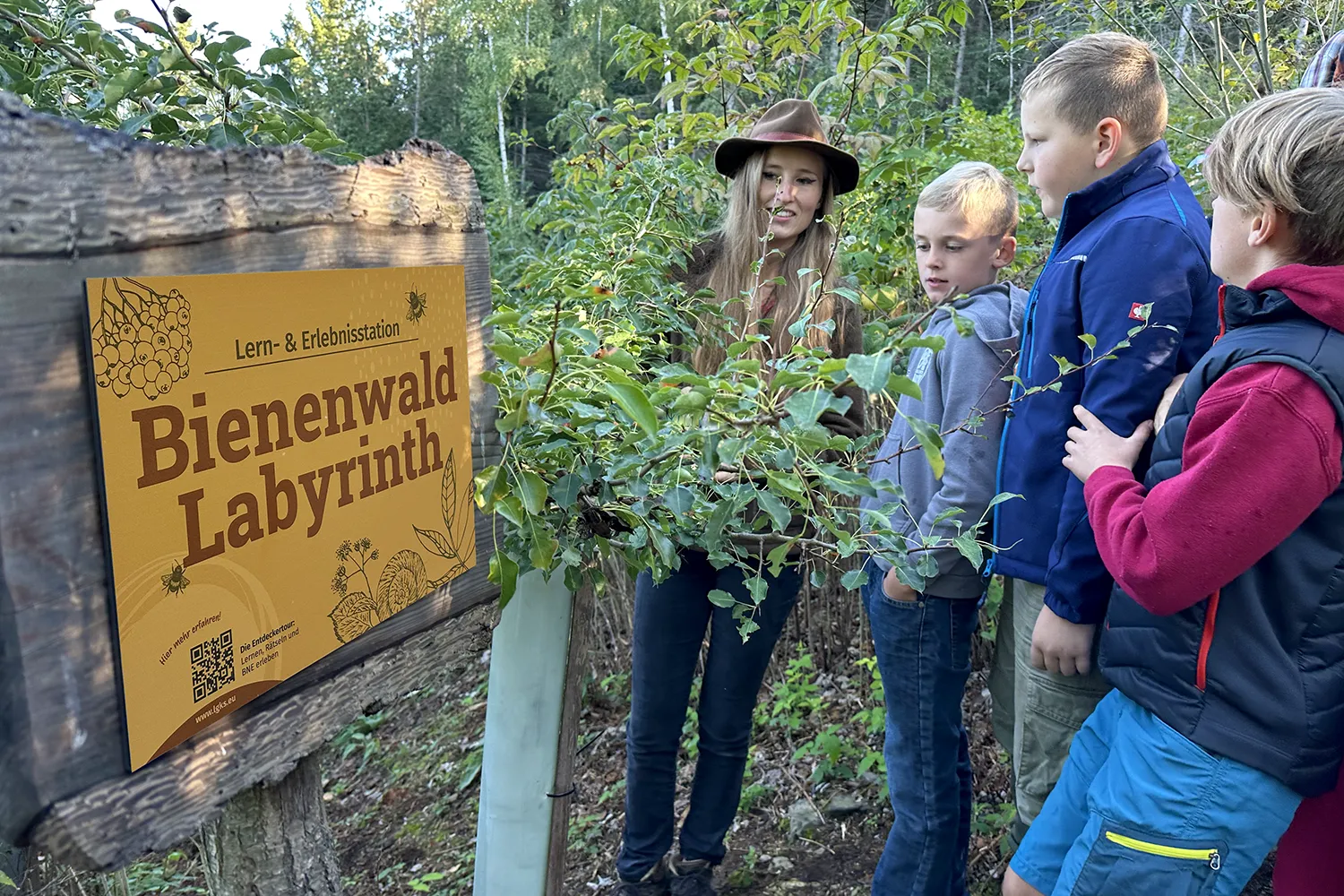
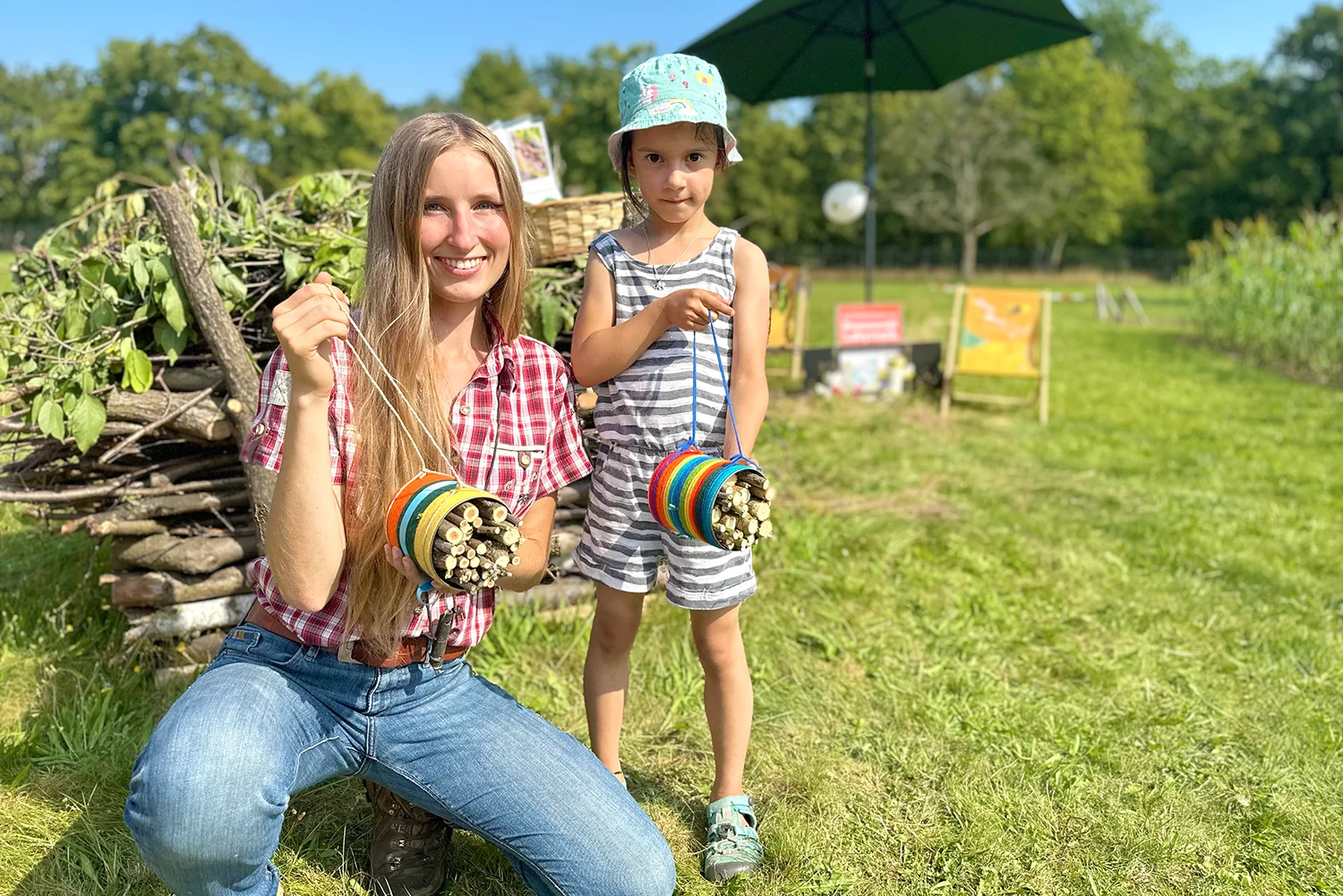
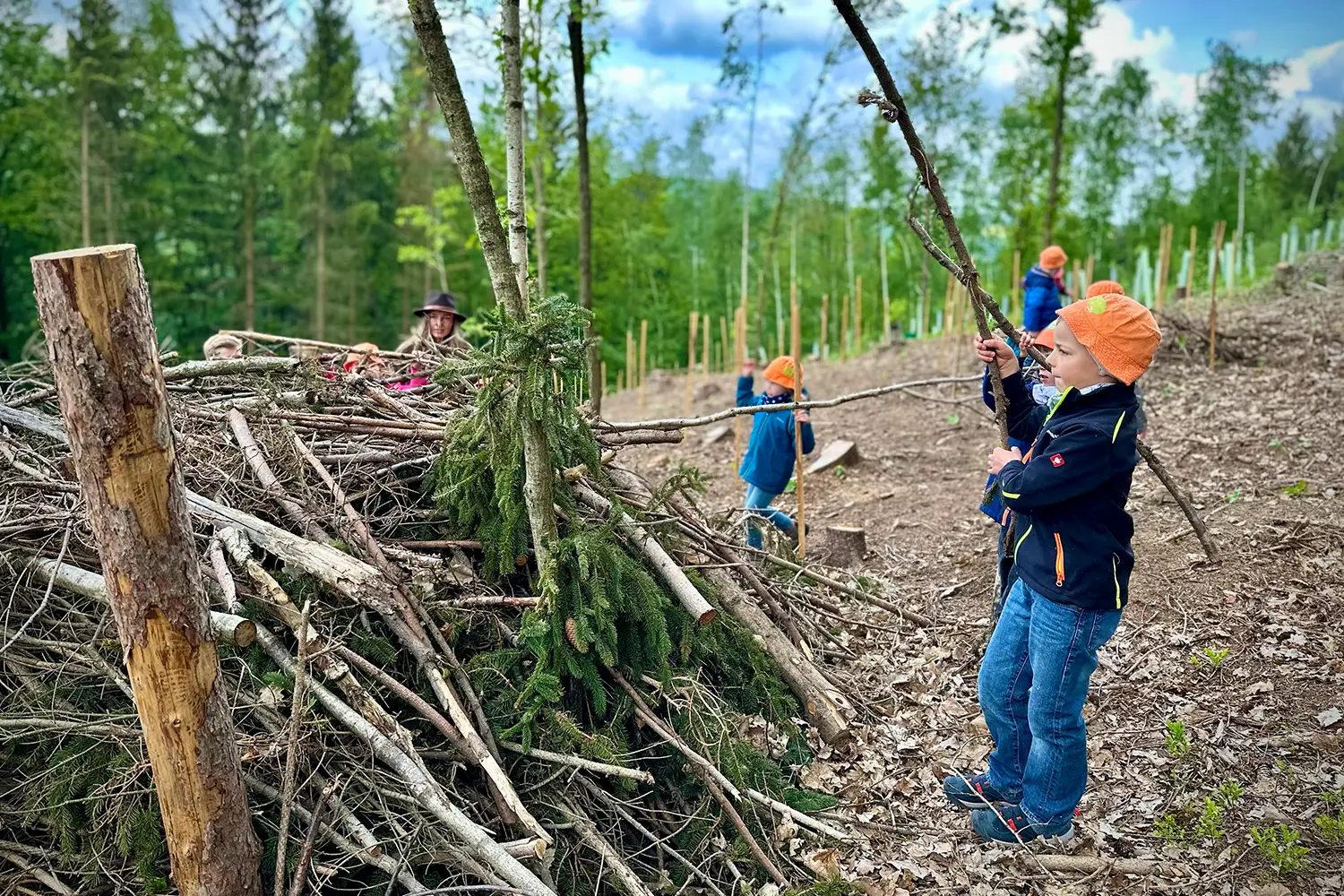
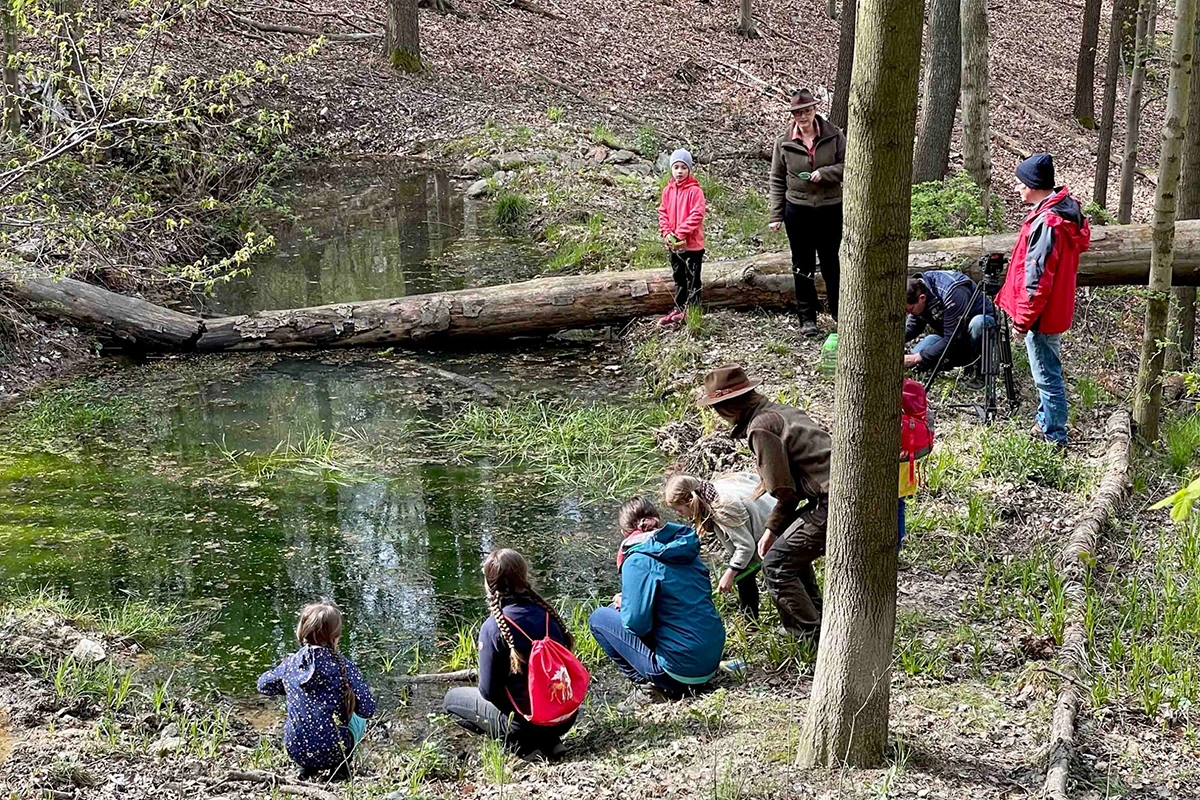
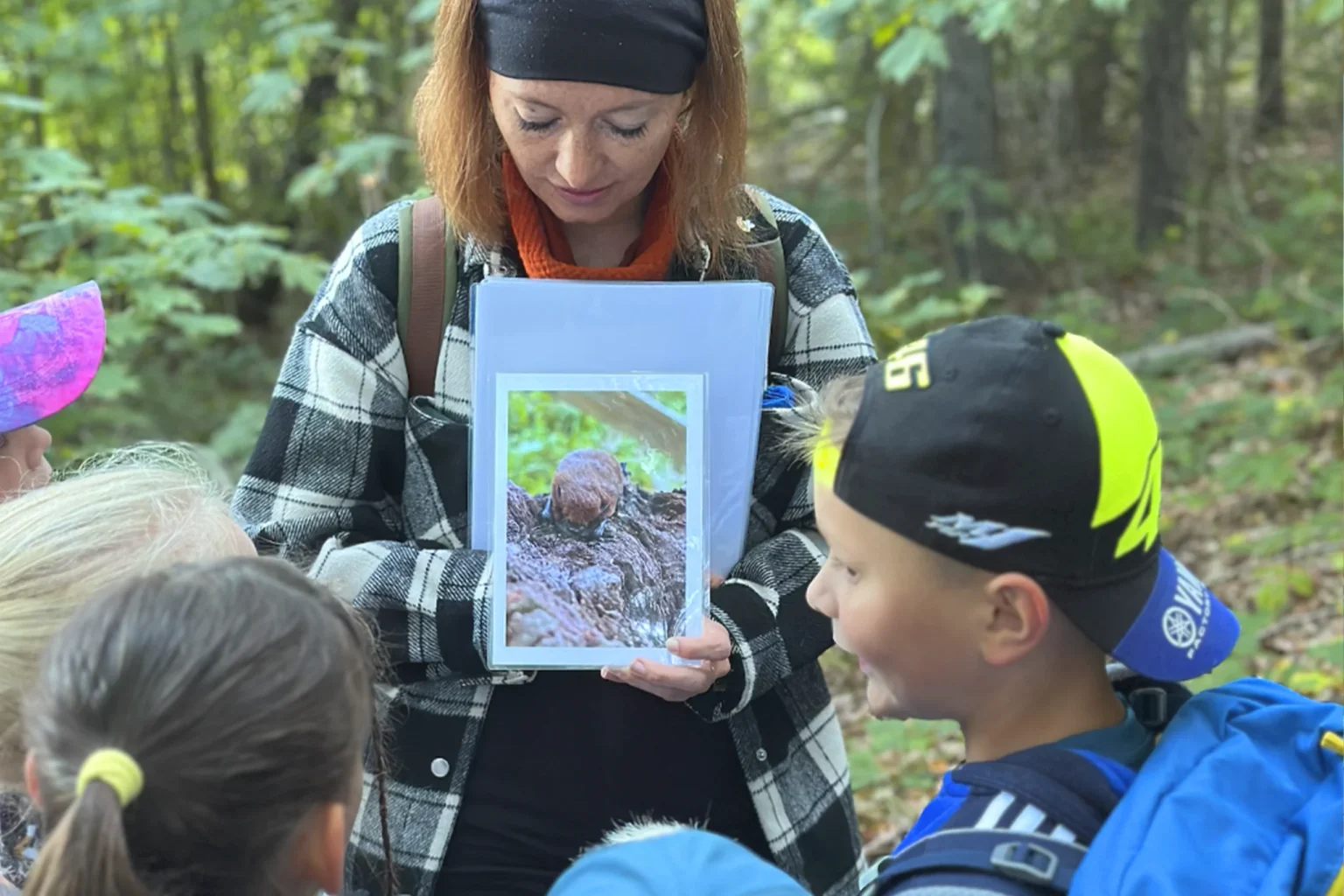
Bildung für nachhaltige Entwicklung (BNE)
Forschen und pflanzen
Aus unseren Naturschutzprojekten heraus entwickeln wir spannende Lernangebote. Ob KiTa oder Schule, Verein oder Unternehmen: Individuell konzipiert werden die Ökosysteme entdeckt, erforscht und aktiv gepflegt.
Das Norwegische Fjordpferd
Naturnah und arterhaltend
Seit 2007 züchten wir mit Leidenschaft und konsequentem Engagement die seltene und urtypische Pferderasse „Norwegisches Fjordpferd“ und bilden sie professionell für den vielseitigen Einsatz aus.
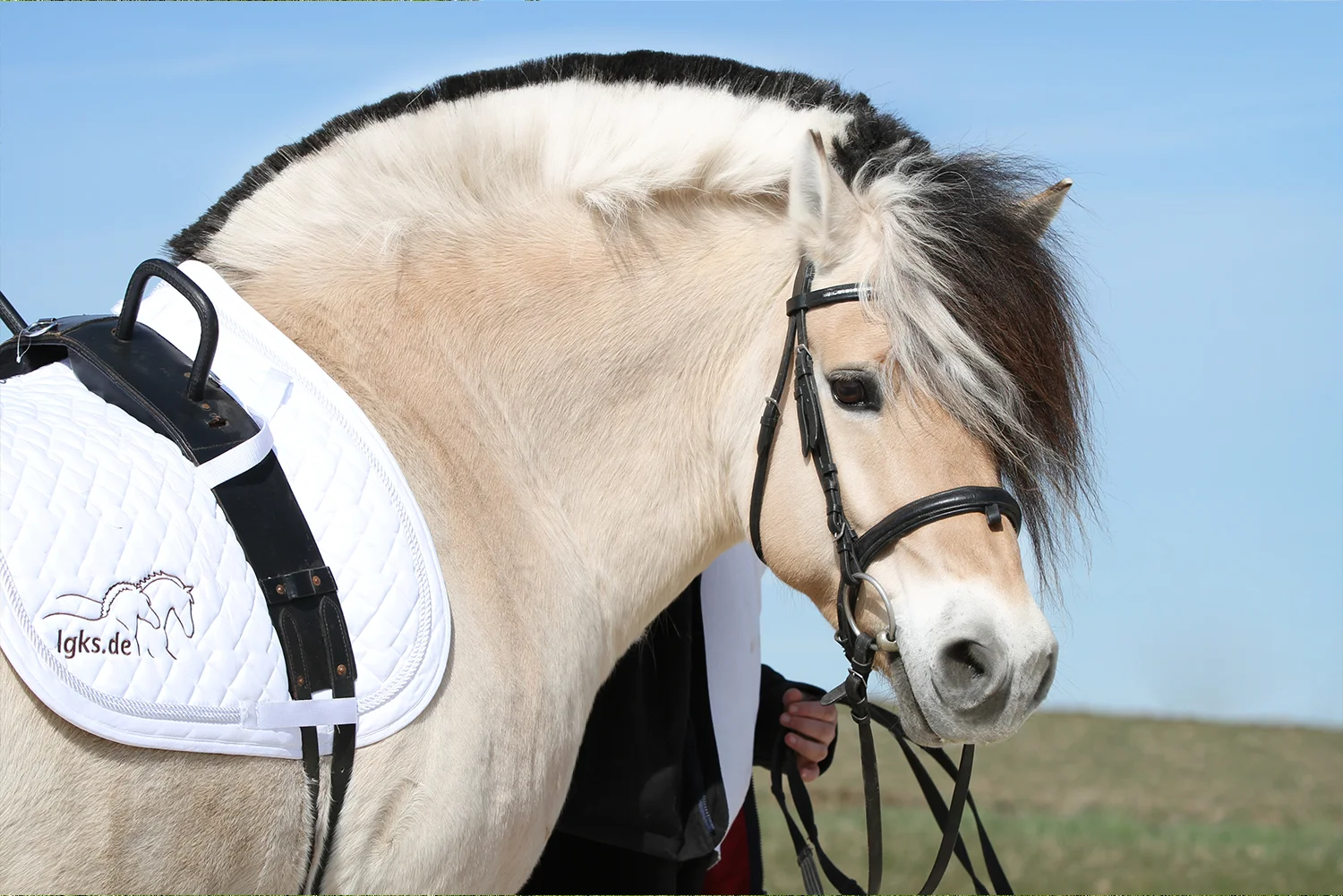
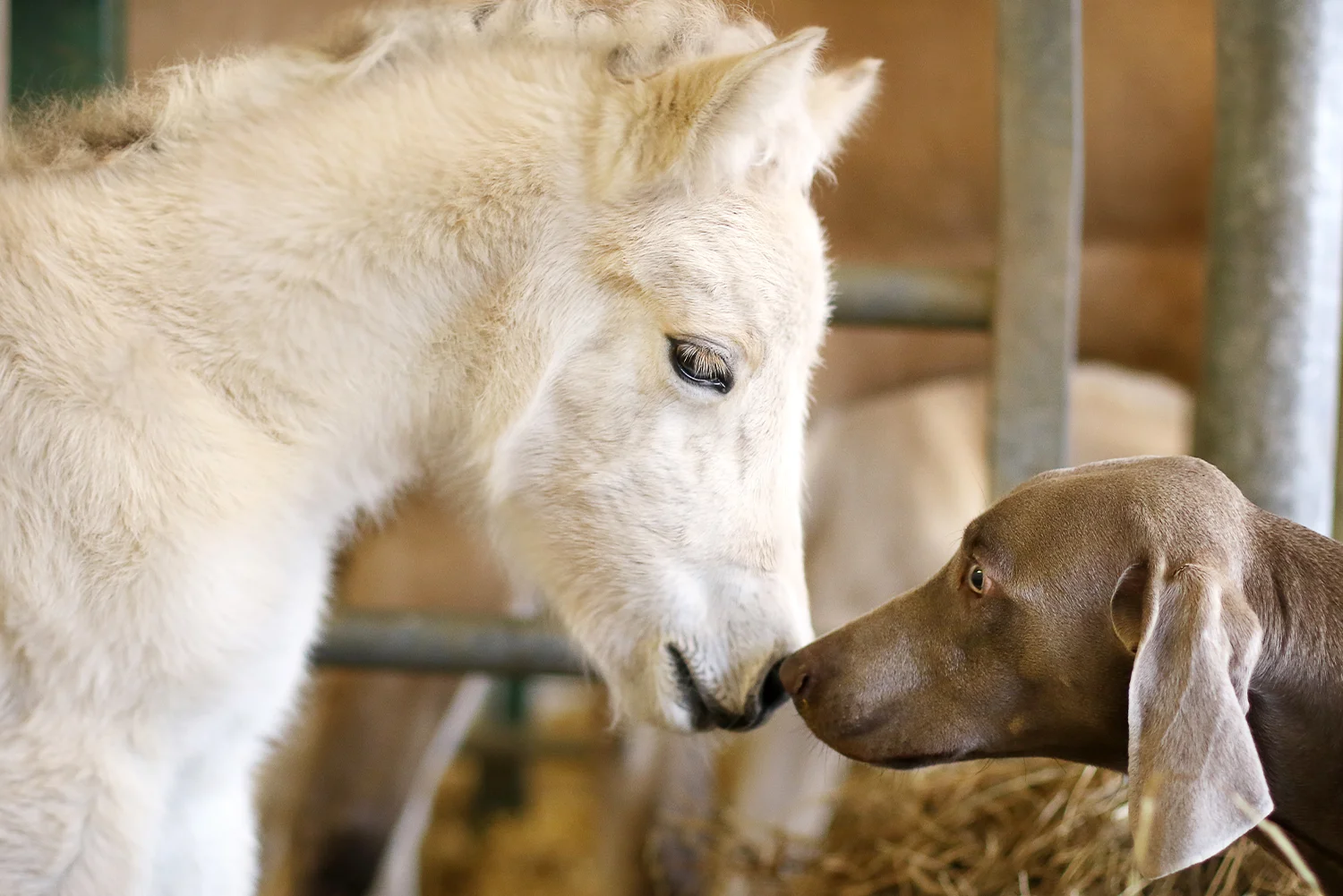
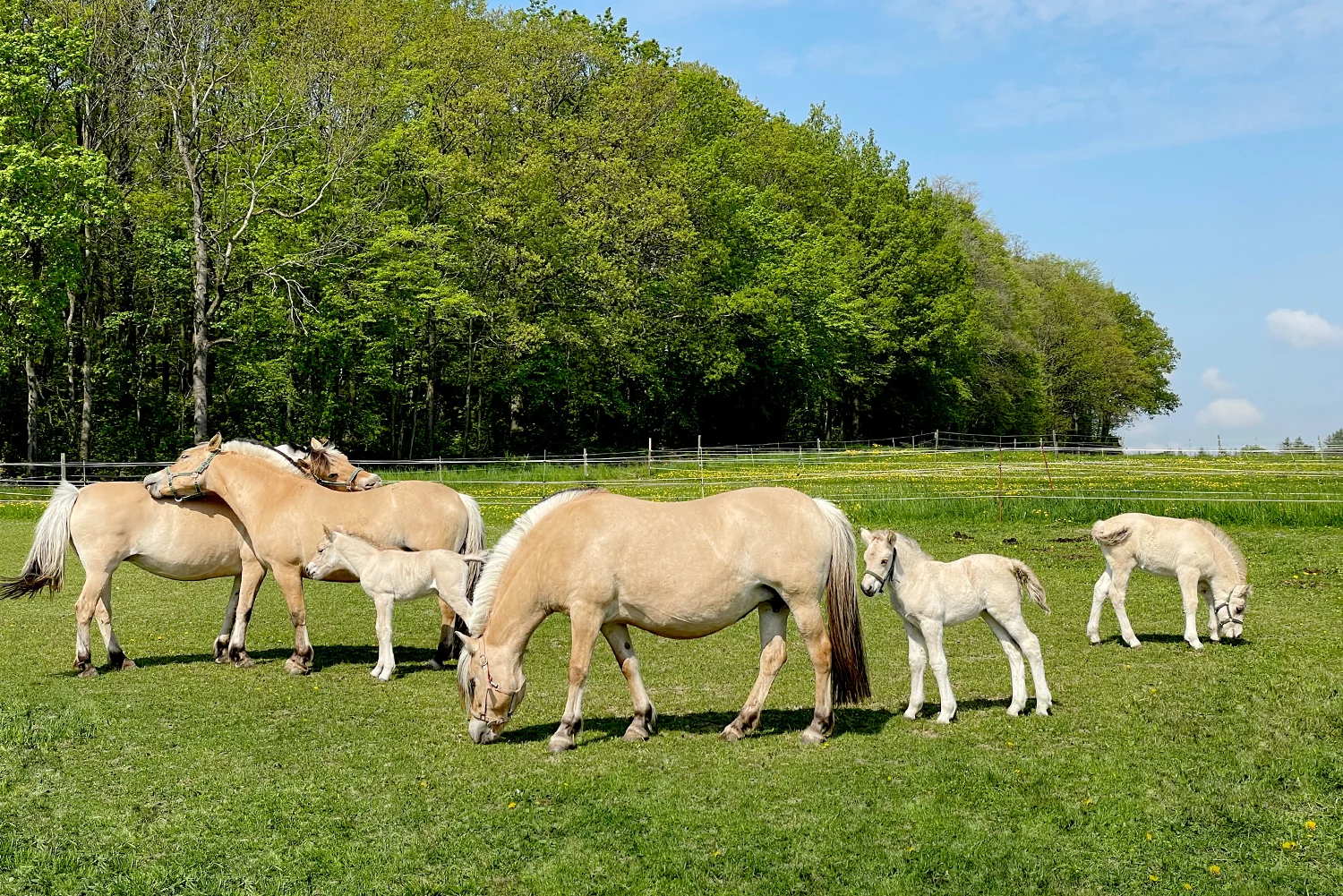
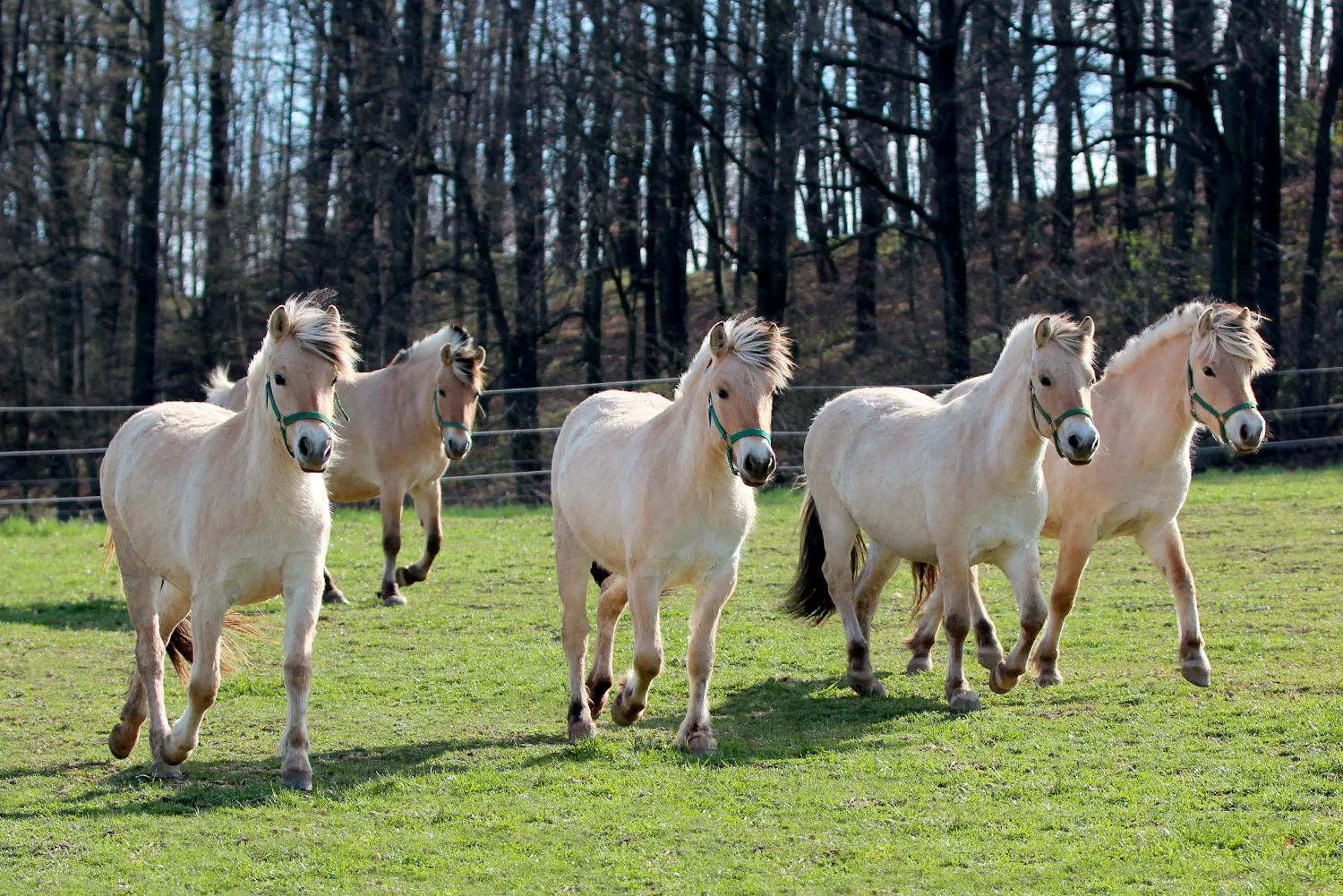
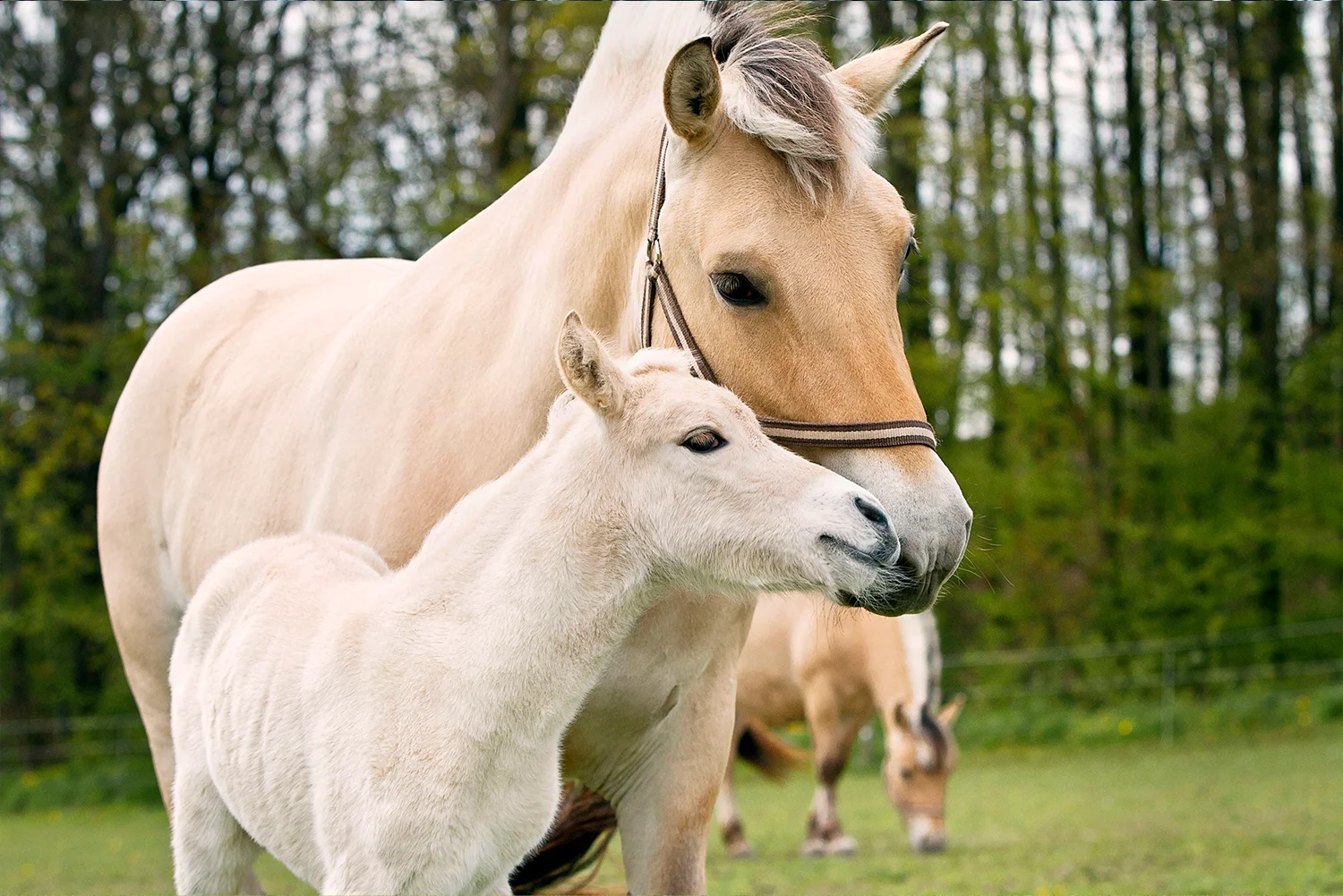
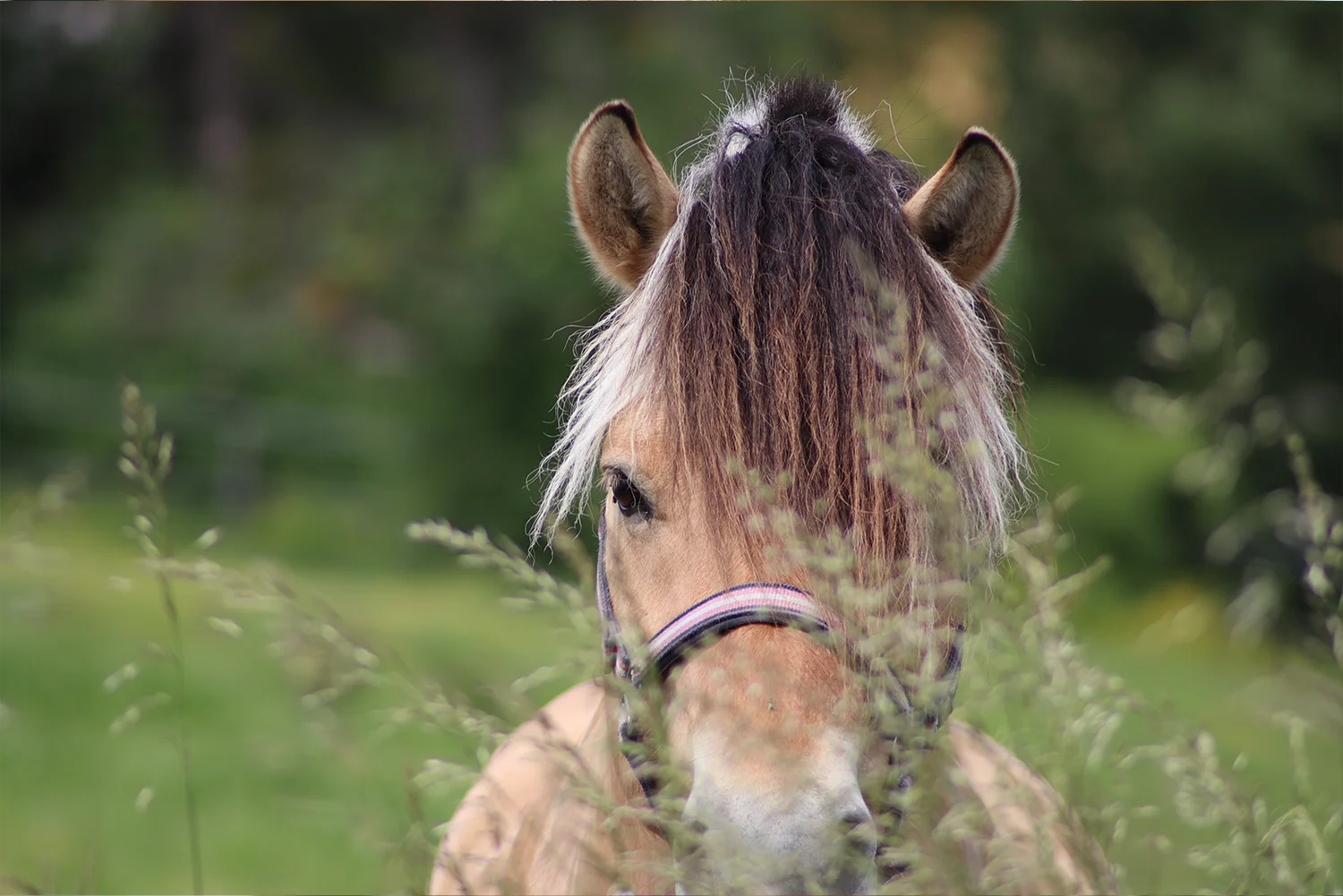
Für Helden der Artenvielfalt
Dein Engagement
für 7 Euro
- Mit 1 qm zum Teil eines ausgezeichneten Projektes werden!
- Lokal und nachhaltig Artenvielfalt schützen!
- Dein Beitrag sichert 3 Jahre die Pflanzung und Pflege des Lebensraumes!
- Sieh, was Du bewirkst und komm vorbei in den Bienenwald!
Unsere kommenden Veranstaltungen
Am Hof, auf Messen, zu Stadt- und Sommerfesten – Hier könnt ihr uns demnächst besuchen und mehr über unsere Projekte erfahren.
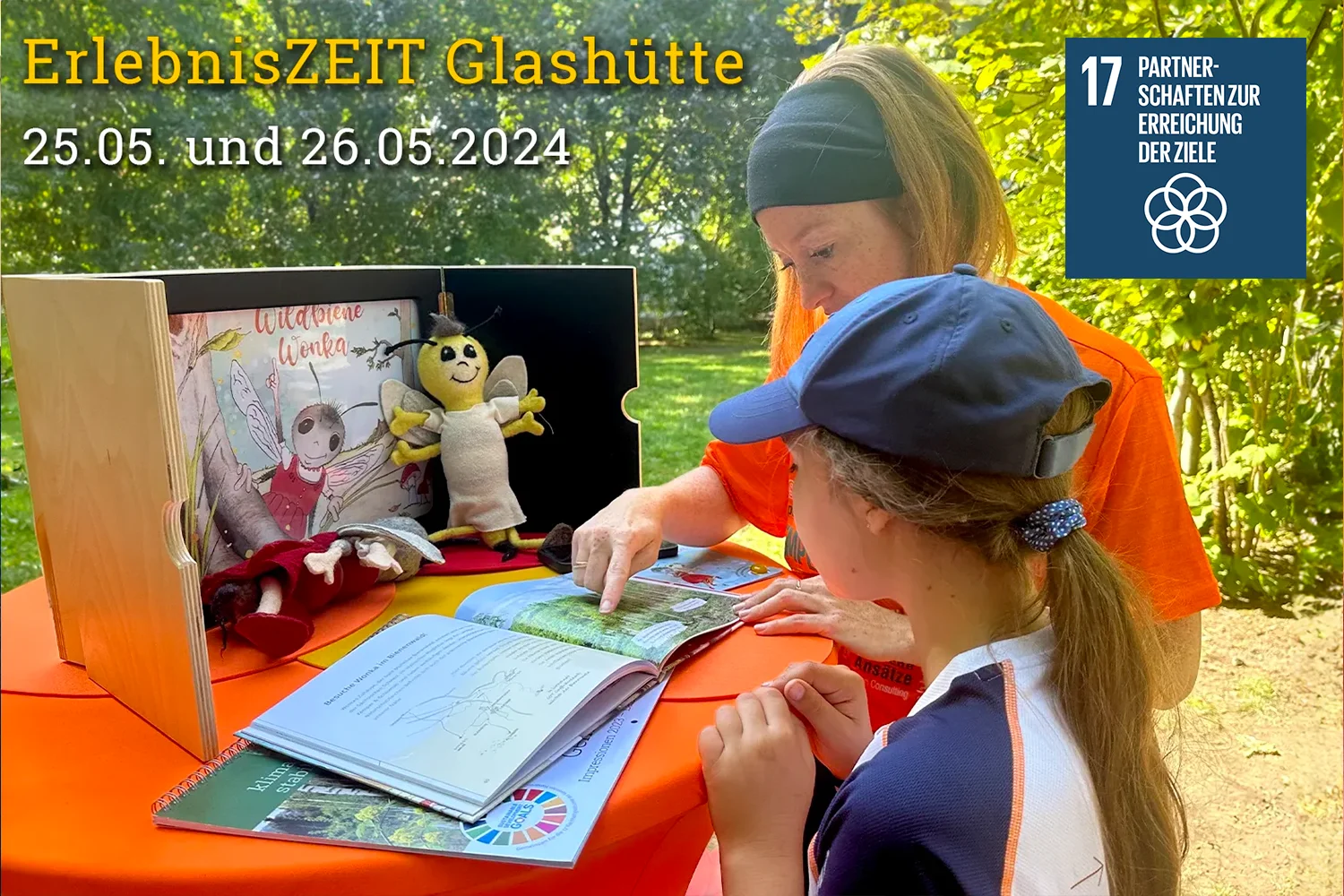
ErlebnisZEIT Glashütte – Wildbiene trifft auf Uhrenstadt
25.05. und 26.05.2024
Wildbiene trifft Uhrenstadt – Wir laden Euch ein, unseren bienenstarken Stand auf dem Stadtfest ErlebnisZEIT in Glashütte zu besuchen. Hier bieten wir familienfreundliche Mitmachaktionen an und stellen unsere vielfältigen BNE-Angebote rund um den Sächsischen Bienenwald vor. Außerdem erfahrt Ihr mehr über unsere regionalen Veranstaltungen wie unseren Frühlingsspaziergang und interessante Ferienprogramme.
Weitere Informationen findet Ihr hier.
Weitere Aktionen, Events und Veranstaltungshighlights findet Ihr hier!
- 01.06.2024 | 12.00 – 14.00 Uhr
Ostsächsischer Töpfermarkt Dresden – Signierstunde mit Wildbiene Wonka - 02.06.2024 | 14.00 Uhr
Frühlingsspaziergang am LGKS – Zwischen Bienenwald und Benjeshecke - 12.06. und 13.06.2024
7. Jahrestagung RENN.mitte „Biodiversität, Klimaanpassung und gesellschaftlicher Zusammenhalt“ in Erfurt - 18.06.2024
Aktionstag „genialsozial“ – Gemeinsam Stark für die Natur
- 04.08.2024 | 11.00 – 18.00 Uhr
Sommerfest Botanischer Garten 2024 - 13.09. bis 15.09.2024
Deutsche Waldtage 2024 – Wald und Wissen - 15.09.2024
12. UNICEF-Familienlauf: Bewegtes Engagement für unsere Kinder - 15.11.2024
Bienen, Bücher, Bildung – Bundesweiter Vorlesetag 2024
Gemeinsam einzigartig
Nachhaltig Netzwerken – Zukunft gestalten
Als Experten aus der Praxis und mit unserer langjährigen Erfahrung setzen wir uns erfolgreich für Biodiversität, Naturschutz, Bildung für nachhaltige Entwicklung (BNE) und zukunftsfähigen Waldumbau ein. Als Impulsgeber und Praxispartner für regionale und überregionale Projekte engagieren wir uns für den Erhalt und die Wiederherstellung stabiler und gesunder Ökosysteme als unverzichtbare Grundlage für unser Überleben, unser Wohlergehen und unseren Wohlstand. Globale Herausforderungen wie Klimawandel und Artensterben können nur gemeinsam bewältigt werden.
Hier Netzwerken.
Begeisternde „Sondersitzung“ im Landtag: Wildbienenstarke Lesung mit dem Sächsischen Landtagspräsidenten
Habt ihr euch jemals gefragt, wie es wäre, in die geheimnisvolle Welt der Wildbienen einzutauchen und mit ihnen auf eine abenteuerliche Reise zu gehen? Diese faszinierende Vorstellung wurde für über 100 neugierige Grundschülerinnen und Grundschüler zur Wirklichkeit, als der Sächsische Landtag seine Türen für eine ganz besondere Sitzung öffnete: Die Geschichte von „Wildbiene Wonka – Abenteuerflug im Bienenwald“.
eku-ZUKUNFTSPREIS 2023 – Unser Wildbienen-Führerschein wird ausgezeichnet
„Unser Bienenwald Sachsens“ hat sich zu einem vielseitigen Lern- und Erlebnisort entwickelt. Der „Wildbienen-Führerschein“ als unser neu entwickeltes BNE-Projekt rund um den Bienenwald ist nicht nur bei unseren kleinen und großen Bienenwaldbesuchern sehr gefragt, sondern wurde nun auch als innovative und vorbildliche Idee mit dem eku – ZUKUNFTSPREIS für Energie, Klima, Umwelt ausgezeichnet.
In unserem Blogbeitrag erfahrt Ihr mehr über unser ausgezeichnetes Projekt.
Mein Wald ist für Dich da
Wir sind Teil der bundesweiten PEFC-Aufklärungskampagne „Mein Wald ist für Dich da“, die über die Aufgaben, Herausforderungen und innovativen Ideen von Waldbesitzenden berichtet. Dazu hat PEFC neben uns vier weitere Waldbesitzerinnen und Waldbesitzer besucht, die mit Tatkraft und Leidenschaft ihren Wald nachhaltig bewirtschaften. Sie zeigen aber auch, vor welchen Herausforderungen sie stehen, was dafür getan werden muss und wie wir gemeinsam den Wald schützen können.
Weitere Infos zur PEFC-Zertifizierung und zur Kampagne findet Ihr auf unserer Website.
Sächsischer Waldpreis „Preis für vorbildliche Waldbewirtschaftung 2023“
Am 20.11.2023 wurde der Sächsische Waldpreis verliehen. Den Sächsischen Waldpreis überreichte uns Staatssekretär Dr. Gerd Lippold im Namen des Sächsischen Staatsministeriums für Energie, Klimaschutz, Umwelt und Landwirtschaft (SMEKUL). Mit dem diesjährigen Preis wurden drei Waldbesitzerinnen und Waldbesitzer ausgezeichnet, die durch ihre integrative und naturnahe Waldbewirtschaftung die Biodiversität in ihren Wäldern entscheidend verbessert bzw. erhöht haben.
In unserem Blogbeitrag erfahrt Ihr alles Weitere zur Auszeichnung.
Nationale Auszeichnung – Bildung für nachhaltige Entwicklung
Bildung ist nicht nur der Schlüssel für eine erfolgreiche Zukunft, sondern auch für die Bewältigung der globalen Herausforderungen. Bildung schafft Chancengleichheit, soziale Gerechtigkeit und ermöglicht die Gestaltung einer nachhaltigen Zukunft für Mensch und Natur. Mit unserem beispielhaften Engagement überzeugten wir die Jury und erhielten die BNE-Auszeichnung.
Alles Weitere zur Auszeichnung erfahrt Ihr in unserem Blogbeitrag.
Die FN zeichnet die Biodiversität am LGKS aus!
Im Rahmen des Biodiversitätswettbewerbs „Grüner Stall“ der Deutschen Reiterlichen Vereinigung e.V. (FN) wurden beispielhafte und vorbildliche Projekte zum Erhalt der Biologischen Vielfalt ausgezeichnet. Sie zeigen, wie die Pferdehaltung unseren Artenreichtum in Flora und Fauna fördert. Mit den vielfältigen Naturschutzprojekten entlang der Koppeln, Bergwiesen und an Waldrändern wurden wir als Ideen- und Impulsgeber für Nachhaltigkeit und Biodiversität ausgezeichnet.
In unserem Blogbeitrag erfahrt Ihr mehr über die Auszeichnung.
Erneute Auszeichnung unserer Waldprojekte durch die neue UN-Dekade!
Die UN-Dekade geht in eine neue Runde. Unser Projekt „Wer A(rtenvielfalt) sagt, muss auch B(ienenwald) sagen – Ein „summendes“ Waldkonzept als bundesweites Erfolgsmodell“ wurde mit dem Prädikat „Hervorragendes Beispiel“ im Ökosystem-Komplex „Wälder“ ausgezeichnet.
In unserem Blog findet Ihr weitere Informationen zu dem gewürdigten Projekt und der UN-Dekade!
Wir sind hervorragendes Beispiel der neuen UN-Dekade!
Erfolgreiche Teilnahme am Projektwettbewerb in der internationalen UN-Dekade zur Wiederherstellung von Ökosystemen: Das LGKS wurde mit seinen Flächen im Ökosystem-Komplex „Kultur- und Agrarlandschaften“ als „Hervorragendes Beispiel“ ausgezeichnet. Damit werden repräsentative Projekte zur Wiederherstellung, Erhaltung oder Pflege von Ökosystemen gewürdigt.
Weitere Infos zum Wettbewerb haben wir im Blogbeitrag zusammengefasst.
Sächsische Verfassungsmedaille für Bärbel Kemper
Am 11.06.2022 wurden Betriebsleiterin Bärbel Kemper und fünf weitere Persönlichkeiten durch den Sächsischen Landtagspräsidenten Dr. Matthias Rößler mit der Sächsischen Verfassungsmedaille geehrt.
In unserem Blogbeitrag erfahrt Ihr mehr zur Auszeichnungsveranstaltung.
Noch mehr Neues vom Landgut gibt's in unserem Blog!
Diese und weitere Beiträge rund um das Landgut Kemper & Schlomski und unsere vielfältigen Projekte findet Ihr in unserem Blog.
Ausgezeichnetes Teamwork
Darauf sind wir stolz
Folgende Projekte werden gefördert

Praktischer Naturschutz: Artenreiches Grünland
Öffentlichkeits- und Bildungsarbeit: „Ein grünes Netz für die Fledermaus“
